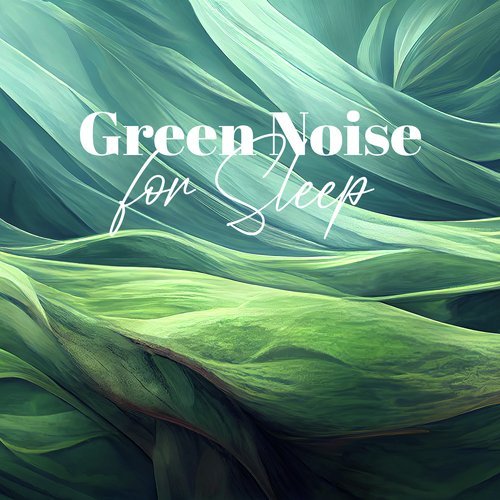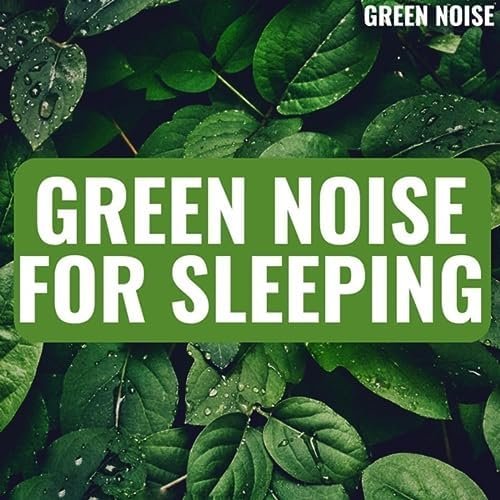Introduction to better sleep with green noise:
Better Sleep with Green Noise. As more people explore sound therapy for sleep, green noise has emerged as a popular option. But with different variations available, it can be challenging to know which type will suit your needs.
In the quest for better sleep, many people turn to various methods, from meditation to herbal teas. However, an increasingly popular aid is sound therapy, particularly using specific noise colours like white, pink, and brown noise. Let’s dive into the details of each type to help you find the best one for achieving a peaceful night’s rest.
Among these, green noise is emerging as a promising tool for enhancing sleep quality. But what exactly is green noise, and how can it help you achieve a better night’s sleep.
What is Green Noise?
Green noise is a balanced, soothing sound similar to the ambient noise found in nature. Unlike white noise, which includes all sound frequencies equally, or pink noise, which emphasises lower frequencies, green noise has a more narrow frequency range, typically concentrated around 500 Hz. This gives it a more natural, calming quality, reminiscent of sounds like flowing rivers, rustling leaves, or the wind through trees.

The Science Behind Green Noise sound therapy works by masking disruptive noises that can interrupt sleep. Green noise, with its natural sound profile, is particularly effective because it closely mimics the types of sounds our ancestors would have experienced in the wild.
These natural sounds signal to the brain that the environment is safe, which can help reduce stress and promote relaxation, making it easier to fall asleep.Studies have shown that nature sounds can significantly reduce the body’s sympathetic response, the system responsible for the “fight or flight” reaction. By lowering stress levels, green noise can help decrease the time it takes to fall asleep and improve overall sleep quality.
Benefits of Green Noise for Sleep:
1.Promotes Relaxation:
The gentle, natural sounds of green noise help create a peaceful environment, making it easier to unwind after a long day.
2.Masks Disturbances:
Green noise can effectively block out disruptive sounds such as traffic, loud neighbours, or even a partner’s snoring, allowing for uninterrupted sleep.
3.Improves Sleep Quality:
By helping the brain stay in a relaxed state, green noise can promote deeper, more restorative sleep cycles, leading to better rest and more energy during the day.
4.Reduces Stress and Anxiety:
The calming nature of green noise helps lower anxiety levels, which is crucial for those who struggle with stress-related insomnia.
How to Incorporate Green Noise into Your Sleep Routine?
1.Use a Green Noise Machine or App:
Many sound machines and apps offer green noise as an option. These can be set to play continuously throughout the night or on a timer to help you fall asleep.
2.Pair with Relaxation Techniques:
Enhance the effects of green noise by combining it with relaxation practices like deep breathing, progressive muscle relaxation, or meditation.
3.Create a Sleep-Friendly Environment:
Optimise your bedroom for sleep by ensuring it’s cool, dark, and comfortable. Green noise can be the final touch in creating a perfect sleep sanctuary.
4.Experiment with Different Sounds:
Everyone’s response to sound is different. If green noise doesn’t immediately work for you, try different types of noise or combine them to find the most effective sleep aid.
Types:

When discussing noise for sleep and relaxation, different “colours” of noise are often mentioned. Each type has a unique frequency distribution, which creates distinct sound characteristics.
Here’s a breakdown of the most common types:
1.White Noise:
Frequency Distribution:
- Equal intensity across all frequencies.
Sound Characteristics:
- A steady, “hissing” sound similar to the static from a radio or television.
Uses:
- Often used to mask other noises and create a consistent auditory environment, making it easier to concentrate or sleep.
2.Pink Noise :
Frequency Distribution:
- Equal intensity per octave, meaning lower frequencies are louder than higher ones.
Sound Characteristics:
- Softer than white noise, with a balanced mix of high and low frequencies, resembling sounds like heavy rain or wind.
Uses:
- Known to improve sleep by increasing deep sleep and helping to regulate sleep patterns.
3.Brown Noise:
Frequency Distribution:
- Emphasises even lower frequencies than pink noise, resulting in a deeper sound.
Sound Characteristics:
- A low, rumbling sound, similar to distant thunder or a deep waterfall.
Uses:
- Often used to relax the mind and body, and can be particularly helpful for those who find white or pink noise too harsh.
4.Green Noise:
Frequency Distribution:
- Concentrated around mid-range frequencies, typically around 500 Hz.
Sound Characteristics:
- Natural and soothing, resembling sounds like rustling leaves, ocean waves, or a flowing river.
Uses:
- Ideal for relaxation and sleep, as it mimics the calming sounds of nature, helping to reduce stress and Anxiety.
Questions and answers:
Here are the answers to the questions based on the article:
1.What is green noise, and how does it differ from other noise types?
Green noise is a type of sound that closely mimics natural environments, like the sound of rustling leaves or flowing rivers. Unlike white noise, which has equal intensity across all frequencies, green noise focuses on mid-range frequencies, giving it a more soothing and natural quality.
2.How can green noise improve sleep quality?
Green noise can improve sleep quality by masking disruptive noises and creating a calming environment. Its natural sound profile helps reduce stress and anxiety, allowing for deeper, more restorative sleep.
3.What are the main characteristics of white noise, and how is it commonly used?
White noise has equal intensity across all sound frequencies, creating a consistent “hissing” sound. It is commonly used to mask other noises and create a stable auditory environment, which can help people concentrate or fall asleep.
4.In what way does pink noise benefit deep sleep?
Pink noise benefits deep sleep by enhancing lower frequencies, which can help regulate sleep patterns and promote more extended periods of deep, restorative sleep.
5.Why might someone choose brown noise over other types for relaxation?
Brown noise emphasizes even lower frequencies than pink noise, creating a deep, rumbling sound similar to distant thunder. This deep, soothing quality makes it particularly effective for relaxation and reducing stress.
6.What type of noise is best for masking external disturbances during sleep?
Green noise and white noise are both effective at masking external disturbances during sleep, with green noise offering a more natural, soothing alternative.
7.Which noise type is most similar to natural sounds like rustling leaves or flowing water?
Green noise is most similar to natural sounds like rustling leaves or flowing water, making it ideal for creating a peaceful sleep environment.
8.How do the frequency distributions of blue and violet noise affect their sound characteristics?
Blue noise emphasizes higher frequencies, resulting in a high-pitched, somewhat harsh sound, while violet noise further amplifies these high frequencies, creating an even sharper sound. These characteristics make them less common for sleep and more suitable for sound masking or hearing tests.
9.What is the primary use of gray noise in sound therapy?
Gray noise is designed to be perceived as equally loud at all frequencies, making it useful in sound therapy and hearing tests, where balanced sound perception is important.
10.How does the concept of black noise differ from other types of noise?
Black noise essentially refers to silence or the absence of sound, sometimes punctuated by occasional random noise bursts. It contrasts with other types of noise, which are continuous and serve to mask or drown out other sounds.
conclusion:
understanding the different types of noise and their unique characteristics can help you choose the most effective sound for your needs. Whether you’re seeking to mask disruptive noises, enhance relaxation, or improve sleep quality, each type of noise offers distinct benefits. Green noise, with its natural and soothing qualities, stands out as an excellent option for creating a peaceful sleep environment.
By incorporating green noise or other sound therapies into your routine, you can cultivate a more restful, stress-free sleep experience, ultimately leading to better overall well-being.
you must watch 👁️👁️ this article 👇👇👇
Tips for Better Sleep: Enhancing Your Rest for a Healthier Life





